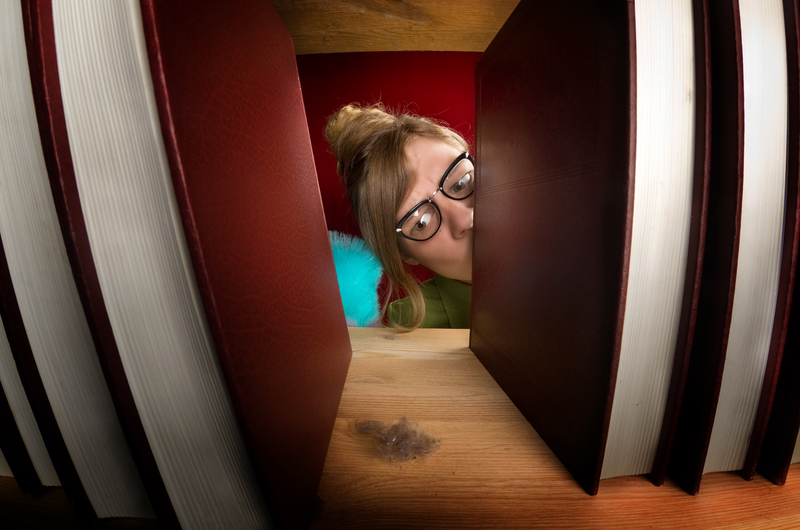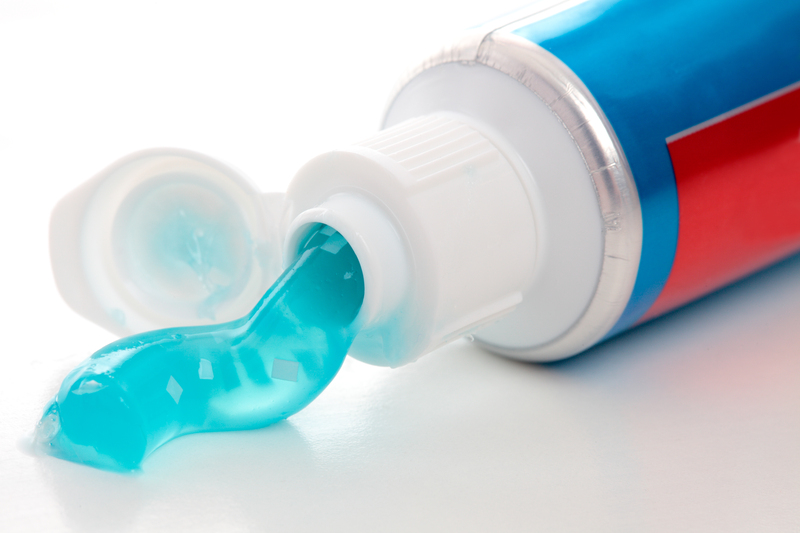Professional Advice for Mould-Free Window Sills
Posted on 03/07/2025

Professional Advice for Mould-Free Window Sills
Ensuring your window sills remain mould-free is essential not just for aesthetics, but also for the health and comfort of your living space. Mould on window sills can be an unsightly problem, cause unpleasant odours, and even contribute to allergy symptoms or respiratory issues. With expert guidance, you can prevent mould formation, effectively tackle existing problems, and learn the best maintenance practices for mould-free window sills in the long run. Read on for a comprehensive guide filled with professional advice, practical tips, and effective solutions.
Understanding Mould on Window Sills
Mould is a type of fungus that thrives in moist, warm environments. Window sills are particularly vulnerable to mould growth due to condensation, poor ventilation, and water intrusion. Not only does mould pose health risks, but it can also damage window frames, paint, and surrounding walls, leading to costly repairs.
Common Causes of Mould on Window Sills
- Condensation: Warm, moist air inside your home meets the cold window surface, turning into water droplets that collect on the sill.
- Poor Ventilation: Inadequate airflow around windows enables humidity and dampness to increase.
- Leaky Windows: Damaged seals or poorly installed frames let rainwater seep inside and accumulate on the sill.
- Neglected Cleaning: Dirt and organic debris act as food sources for mould spores.
- Building Design: Some building materials or window placements are more susceptible to condensation and dampness.
By identifying the root causes, you can take proactive steps towards maintaining mould-free window ledges and sills throughout your home.
Professional Prevention Strategies for Mould-Free Window Sills
Experienced property maintenance professionals and mould remediation experts agree: prevention is the best defence against mould. Incorporate these expert strategies and techniques into your routine for lasting results.
1. Improve Ventilation
Proper airflow is critical to prevent moisture from lingering on window sills. Here are professional tips for enhanced air circulation:
- Open Windows Regularly: Even during colder months, opening windows for a few minutes each day can help reduce humidity.
- Use Exhaust Fans: Run exhaust fans in kitchens and bathrooms to expel moist air directly outside.
- Install Trickler Vents: These small vents fitted into window frames allow continuous airflow without having to open windows fully.
- Move Furniture Away: Ensure curtains, blinds, or furniture do not block the window area, allowing air to circulate freely.
2. Maintain Low Indoor Humidity
High indoor humidity is a top reason for mould growth. Experts recommend aiming for a relative humidity level of 40-60%. Achieve this with:
- Using Dehumidifiers: Particularly in damp rooms or during humid seasons, a dehumidifier helps keep moisture levels in check.
- Houseplants: Some houseplants, such as peace lilies or Boston ferns, can absorb excess moisture from the air. Avoid overwatering them, as moist soil can also harbour mould.
- Monitor with a Hygrometer: A simple digital hygrometer tracks humidity levels, helping you take action as needed.
3. Tackle Condensation at the Source
Professional advice for preventing condensation includes:
- Double or Triple Glazing: Upgrading to modern insulated windows reduces the temperature difference that causes condensation.
- Insulate Window Reveals: Adding insulation around window frames helps minimise cold surfaces.
- Thermal Window Film: An affordable solution, these films create an additional barrier against cold air and reduce droplet formation.
4. Inspect and Maintain Window Frames
Regular window inspection is necessary for keeping them sealed and mould-free:
- Check Seals and Caulking: Look for cracks or gaps in window seals. Reseal as necessary to prevent water ingress.
- Repair or Replace Damaged Frames: Wooden frames susceptible to rot and paint flaking should be treated, repaired or replaced promptly.
- Ensure Slope on Sills: Properly angled sills direct water away from the window, discouraging pooling and dampness.
5. Clean Window Sills Frequently
Routine cleaning prevents a buildup of dust and organic matter, which feed mould spores. Experts suggest:
- Weekly Wipe-downs: Use a microfibre cloth to remove dust and moisture from both the sill and the inside window frame.
- Disinfect: A gentle solution of white vinegar and water is a natural antifungal spray for day-to-day use.
- Check for Early Signs: Regular cleaning allows you to spot and tackle minor mould before it escalates.
Effective Techniques for Removing Mould from Window Sills
Already noticing black or greenish spots along your window ledges? Treating existing mould quickly and safely is crucial to preventing its return and safeguarding indoor air quality.
Essential Safety Precautions When Cleaning Mould
- Wear Gloves and a Mask: Protect your hands and respiratory system from mould spores and cleaning chemicals.
- Ventilate the Room: Keep windows open and run a fan while cleaning to disperse spores and fumes.
- Contain the Area: If mould is extensive, cover nearby furniture and floors to prevent spreading.
Step-by-Step Mould Removal Process
- Dry the Area: If window sills are wet or damp, dry them thoroughly with an absorbent towel.
- Vacuum: Use a HEPA-filter vacuum to gently remove loose spores and debris without stirring them into the air.
- Apply a Cleaning Solution: For mild cases, a 1:1 mixture of white vinegar and water is generally effective. For tougher mould, use a solution of 3% hydrogen peroxide or a mould-specific cleaner.
- Scrub Gently: With a soft brush or non-abrasive scouring pad, scrub the affected area. Avoid harsh scrubbing that could damage the paint or wood.
- Rinse and Dry: Wipe off any residue with a clean, damp cloth. Dry the sill completely to prevent mould re-growth.
- Dispose of Cleaning Materials: Safely throw away gloves, sponges, and other single-use materials after cleaning.
Note: For severe or recurring mould problems (especially if covering an area larger than one square metre), consult a professional mould remediation service.
Recommended Materials for Mould-Resistant Window Sills
For those considering renovations or replacement, selecting the right materials is key for easier long-term mould prevention. Here's what professionals suggest:
- UPVC (Unplasticized Polyvinyl Chloride): Highly resistant to moisture, easy to wipe clean, and not a food source for mould.
- Aluminium: Non-porous and quick drying, making it difficult for mould to grow.
- Laminated Treated Wood: Specially treated and sealed woods are less likely to attract moisture, but require ongoing maintenance.
- Stone and Composite Stone: Granite, quartz, or engineered stone window ledges resist moisture and are simple to clean.
When replacing window sills, discuss mould-proof options with your installer and request high-quality water-resistant sealants for all joints and edges.
Long-Term Maintenance Advice for Mould-Free Window Ledges
Maintaining mould-free window ledges is an ongoing process. Here's a maintenance checklist recommended by property care experts:
- Monthly Inspections: Look for water stains, peeling paint, or unusual odours that suggest early mould issues.
- Annual Deep Cleaning: Remove curtains and blinds, and thoroughly clean the entire window frame and sill using an antifungal solution.
- Maintain Sealant Integrity: Reapply waterproof sealant where necessary, especially before wet seasons.
- Deal with Leaks Promptly: Even minor water ingress should be fixed quickly to avoid prolonged dampness.
- Control Indoor Plants: Place potted plants away from sills or use trays to contain any water spills.
Tip: Keeping a log of inspection dates and any repairs can help identify patterns that lead to recurring mould issues.
Common Mistakes to Avoid When Preventing Mould
Even with the best intentions, homeowners sometimes inadvertently encourage mould growth. Avoid these typical DIY pitfalls:
- Using Bleach on Porous Surfaces: While bleach may kill surface mould, it doesn't penetrate porous materials like wood, allowing mould to return.
- Painting Over Mould: Simply painting does not solve the problem and may worsen indoor air quality as the mould festers underneath.
- Neglecting Hidden Moisture Sources: Always track down any leak or condensation source rather than just cleaning visible mould.
- Skipping Professional Help for Large Outbreaks: Extensive mould may require special equipment and containment to remove fully and safely.
Avoiding these common errors will greatly increase the chances of enjoying mould-free window sills for years to come.
Frequently Asked Questions About Mould-Free Window Sills
How often should I clean my window sills to prevent mould?
Weekly cleaning is sufficient for most homes, but increase the frequency if you notice condensation, live in a humid climate, or often keep windows closed.
What natural products can I use for mould prevention?
White vinegar, tea tree oil, and baking soda are all-natural options that act as mild antifungal agents. They're safe for most surfaces but always test on a small area first.
Is it safe to use a steam cleaner on window sills?
Yes, with caution. Steam effectively kills mould spores, but take care with wooden or painted sills to avoid swelling or paint damage. Always dry the area completely afterwards.
Will upgrading my windows help prevent mould?
Absolutely. Energy-efficient, well-sealed windows not only reduce condensation but also improve your home's overall comfort and protection from the elements.
Conclusion: Achieving Long-Lasting Mould-Free Window Sills
Professional advice for achieving mould-free window sills centres around proactive prevention, consistent cleaning, and swift action when issues arise. By understanding the causes of mould, applying effective prevention strategies, using suitable materials, and investing in regular maintenance, you can create a healthier, more attractive living environment. Avoid the common mistakes, opt for recommended cleaning techniques, and when in doubt, consult with property care specialists to ensure your window ledges remain spotless and safe.
Commit to these expert-backed habits, and enjoy the peace of mind that comes from a clean, mould-free home.
- Regular ventilation and humidity control are key.
- Invest in mould-resistant sills and seals during renovation.
- Don't ignore the first sign of mould--act immediately.
- Professional maintenance and advice are invaluable for stubborn or recurring issues.
Keep your window sills mould-free with these tips and enjoy healthier, brighter, and more comfortable living spaces all year round.






